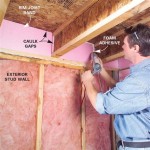How To Make Blueprints For A Basement
Creating a basement blueprint is an essential step in any basement remodel or renovation. A well-designed blueprint will help you visualize the space, plan for electrical and plumbing, and ensure that your project meets building codes. Here's a step-by-step guide to creating blueprints for a basement:
1. Gather Measurements: Start by taking accurate measurements of your basement. Measure the length, width, and height of the space, as well as the location of any windows, doors, and other features. It's helpful to use a laser level to ensure that your measurements are accurate.
2. Choose a Drawing Software: There are several different software programs available for creating blueprints. Some popular options include AutoCAD, SketchUp, and Floorplanner. Choose a program that is user-friendly and fits your skill level.
3. Create a Floor Plan: Begin by creating a floor plan of your basement. Draw the outline of the space and include the location of all walls, doors, and windows. Label each room and include dimensions.
4. Add Electrical and Plumbing: Once you have the floor plan, you can start adding electrical and plumbing elements. Mark the location of light fixtures, outlets, and switches. Also, include the location of plumbing fixtures, such as sinks, toilets, and showers.
5. Designate Spaces: Divide the basement into different spaces, such as a family room, bedroom, or storage area. Label each space and indicate its intended use.
6. Add Details: Include details such as furniture placement, built-in shelves, or other features. This will help you visualize the finished space and make any necessary adjustments before construction begins.
7. Check Building Codes: Before finalizing your blueprint, check local building codes to ensure that your design meets all safety and accessibility requirements. This may include factors such as ceiling height, exit routes, and ventilation.
8. Get Feedback: Share your blueprint with a contractor or architect for feedback. They can provide valuable insights and help you refine your design.
Creating a basement blueprint is a detailed process, but it's well worth the effort. A well-designed blueprint will help you avoid costly mistakes and ensure that your basement remodel or renovation goes smoothly.

Basement Floor Plans Types Examples Considerations Cedreo

How To Plan For A Finished Basement Chiefblog

Basement Floor Plans How To Make A Good Plan For House Layout

How To Create A Great Living Space For Finished Basement Layout

Basement Floor Plans Types Examples Considerations Cedreo

Basement Finishing Plans Layout Design Ideas Diy

Basement Floor Plans Types Examples Considerations Cedreo

Basement Floor Plans Types Examples Considerations Cedreo

Basement Floor Plans

Basement House Plans Next Level Homes








